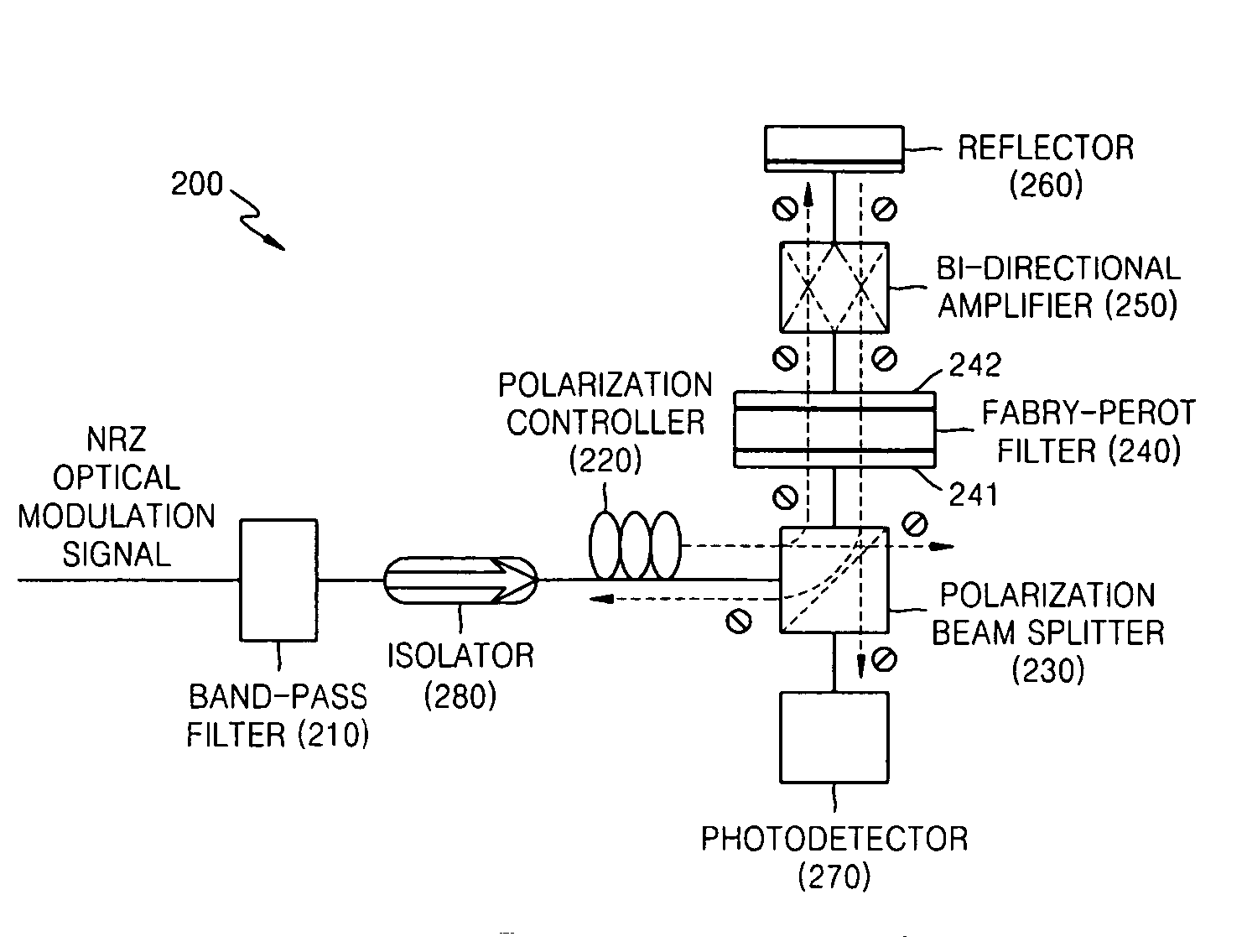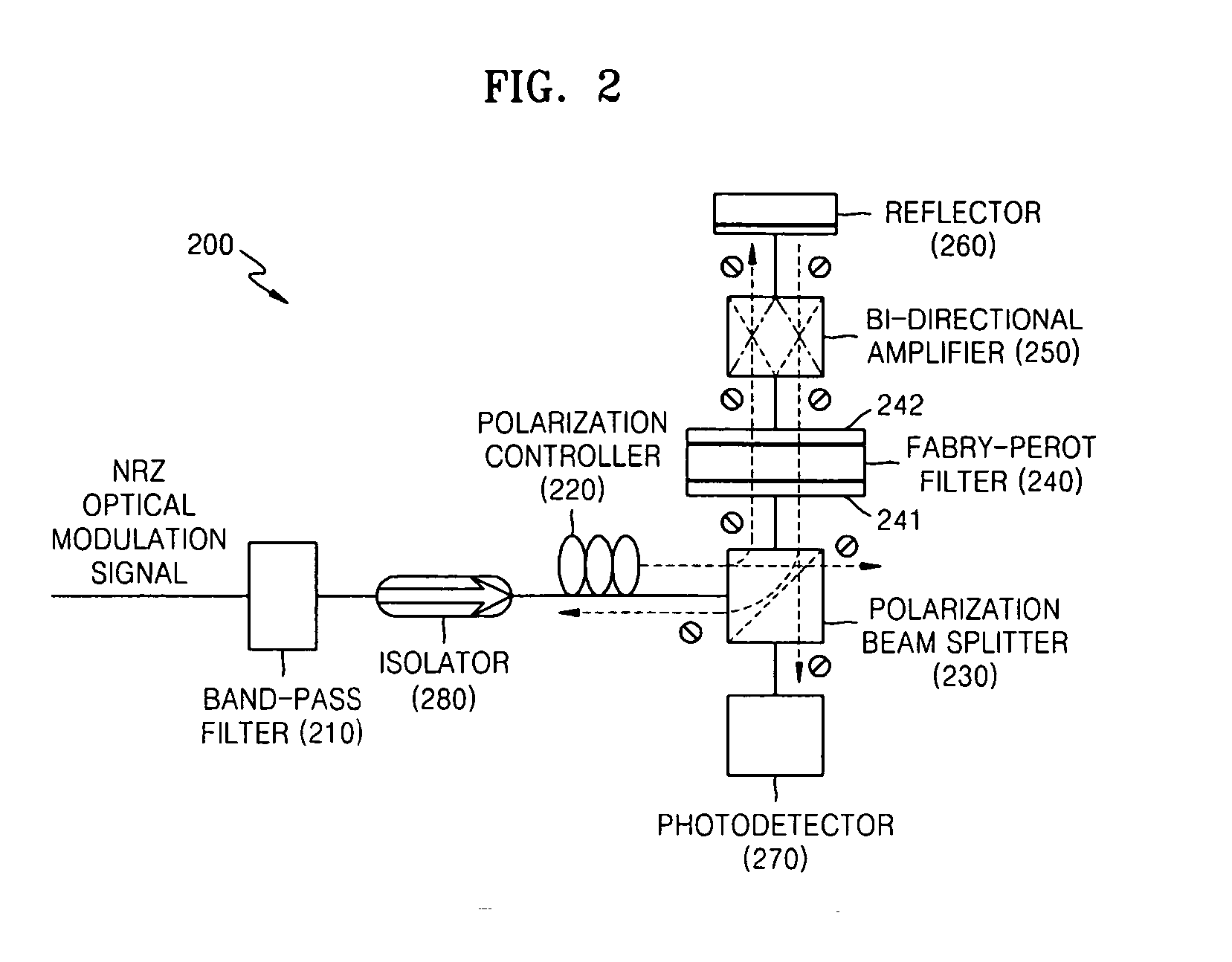Method and apparatus for extracting optical clock signal
a clock signal and optical clock technology, applied in the field of optical clock signal extraction methods and apparatuses, can solve the problems of inefficiency of the method illustrated in fig. 1, difficult manufacturing of optical elements for extracting the desired clock signal, and unstable optical system, so as to reduce the influence of the pattern of input optical signals, reduce noise components, and maximize the efficiency of bi-directional amplifiers
- Summary
- Abstract
- Description
- Claims
- Application Information
AI Technical Summary
Benefits of technology
Problems solved by technology
Method used
Image
Examples
Embodiment Construction
[0023] Hereinafter, preferred embodiments of the present invention will be described in detail with reference to the attached drawings.
[0024]FIG. 2 is a block diagram of an apparatus 200 for extracting an optical clock signal according to an embodiment of the present invention. Referring to FIG. 2, the apparatus 200 includes a band-pass filter 210, a polarization controller 220, a polarization beam splitter 230, a Fabry-Perot filter 240, a bi-directional amplifier 250, a reflector 260, a photodetector 270, and an isolator 280. The reflector 260 may be implemented using a Faraday rotator mirror.
[0025] The band-pass filter 210 selects a predetermined frequency band with properly adjusted amplitudes in an input optical signal. The predetermined frequency band with properly adjusted amplitudes includes a central frequency component and one among a plurality of side frequency components. The input optical signal input to the band-pass filter 210 may be a non-return-to-zero (NRZ) optica...
PUM
 Login to View More
Login to View More Abstract
Description
Claims
Application Information
 Login to View More
Login to View More - R&D
- Intellectual Property
- Life Sciences
- Materials
- Tech Scout
- Unparalleled Data Quality
- Higher Quality Content
- 60% Fewer Hallucinations
Browse by: Latest US Patents, China's latest patents, Technical Efficacy Thesaurus, Application Domain, Technology Topic, Popular Technical Reports.
© 2025 PatSnap. All rights reserved.Legal|Privacy policy|Modern Slavery Act Transparency Statement|Sitemap|About US| Contact US: help@patsnap.com



